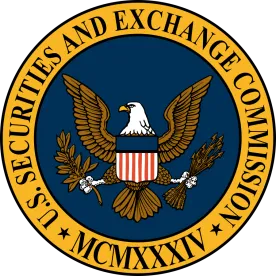On November 2, 2020, the Securities and Exchange Commission adopted amendments to facilitate the use of private, or “exempt,” offerings. The changes will impact offerings structured pursuant to Section 4(a)(2), Regulation D and Regulation S, as well as offerings conducted under Regulation A and Regulation Crowdfunding. The stated purpose of the changes is to facilitate capital formation and increase opportunities for investors by expanding access to capital for small and medium-sized businesses. However, all companies can benefit from the new rules, which create additional certainty and flexibility to move from one exemption to another or between registered and exempt offerings. The new rules provide clear safe harbors from integration of separate exempt offerings, ease the determination of accredited investor status, and relax restrictions on communications made in connection with investor “demo days” and “testing the waters” for a contemplated private offering. The Commission’s adopting release is available here, and the amended rules will be effective 60 days after publication in the Federal Register.
This alert focuses on key changes to the private offering rules that are likely to impact issuers that conduct offerings under Section 4(a)(2), Regulation D and Regulation S.
Integration Safe Harbors in “New” Rule 152
Under certain circumstances, the Commission’s integration doctrine requires an issuer to treat two or more offerings that take place within the same general time-period as a single offering, which may have the effect of undermining reliance on private offering exemptions for one or more of the offerings. For example, if an offering for which general solicitation is prohibited is combined with another where general solicitation is permitted and occurs, the first offering could lose its exempt status. New Rule 152, which entirely replaces prior Rule 152’s language, provides four distinct safe harbors that permit companies to conduct certain sequential or side-by-side offerings without integration concerns, as well as principles to apply in situations that do not fit any of the safe harbors. Some elements of the new rule codify prior Commission interpretation. The new rule applies to all exempt offerings of securities, including offerings made in accordance with Regulation D and Regulation S, and will replace the traditional five-factor test in Rule 502.
Rule 152(a)
Rule 152(a) outlines general principles for how issuers should analyze integration in the event that one of the specific safe harbors does not apply. The rule provides that offers and sales will not be integrated if, based on the particular facts and circumstances, the issuer can establish that each offering either complies with Securities Act registration requirements or qualifies for an exemption.
For an issuer determining whether to integrate an exempt offering that prohibits general solicitation with another offering, Rule 152(a)(1) requires the issuer to have a reasonable belief with respect to each purchaser that the issuer either (i) did not solicit such purchaser through the use of general solicitation or (ii) established a substantive relationship with such purchaser prior to the commencement of the exempt offering prohibiting general solicitation. Issuers that can satisfy the reasonable belief standard may conduct concurrently an offering that prohibits general solicitation and another that permits general solicitation (such as concurrent Regulation D offerings under rules 506(b) and 506(c)) without integration concerns, so long as all other conditions of the applicable exemptions are satisfied. Similarly, Rule 152(a)(1) expands the current interpretive position permitting concurrent registered and private offerings by permitting such offerings to avoid integration concerns if the issuer had a substantive pre-existing relationship with the purchasers in the private offering without having to demonstrate that the purchasers in the private offering were not solicited by the registration statement.
Rule 152(a)(2) applies when an issuer conducts two or more concurrent offerings that permit general solicitation. The new rule provides that if the offering materials for one offering include information about the material terms of a concurrent offering under another exemption, that information may constitute an offer of securities and the latter offering would have to comply with all of the requirements for the former offering.
Rule 152(b): Integration safe harbors
New Rule 152(b) provides the following four non-exclusive integration safe harbors:
-
30-day safe harbor: Any offering made more than 30 calendar days before the commencement of any other offering or more than 30 calendar days after termination or completion of any other offering will not be integrated with the other offering. The safe harbor is not available when an offering that does not permit general solicitation follows an offering that does permit solicitation, but it does apply both to offerings for which a registration statement has been filed under the Securities Act and private offerings. This provision significantly shortens the six-month safe harbor previously available under Rule 502(a). However, to mitigate against a potential increase in the number of non-accredited investors participating in multiple Rule 506(b) offerings by a single issuer, the Commission amended Rule 506(b) to limit the number of non-accredited investors purchasing in such offerings to no more than 35 within any rolling 90-calendar-day period.
-
Rule 701 and Regulation S integration safe harbor: New Rule 152(b)(2) provides that all offers and sales made to employees and consultants under Rule 701, pursuant to an employee benefit plan, or made in compliance with Regulation S, regardless of their relative timing, will not be integrated with other offerings.
-
Subsequent registered offerings: An offering for which a Securities Act registration statement is filed will not be integrated if made subsequent to (1) a terminated or completed offering for which general solicitation is not permitted, (2) a terminated or completed offering for which general solicitation is permitted made only to QIBs (qualified institutional buyers) and IAIs (institutional accredited investors), or (3) an offering for which general solicitation is permitted that terminated or completed more than 30 calendar days prior to the commencement of the registered offering. The Commission noted in particular that private capital raising around the time of an initial public offering is often critical if issuers are to have sufficient funds to continue to operate while the public offering process is ongoing.
-
Safe harbor for exempt offerings permitting general solicitation. The Commission also adopted a non-exclusive safe harbor for exempt offerings permitting general solicitation, including Rule 506(c) of Regulation D. Such offerings will not be integrated if made subsequent to any terminated or completed offering.
Rule 152(c)& (d): Commencement, Termination, or Completion of Offering
For purposes of integration and the safe harbors, new Rule 152(c) provides that an offering will commence at the time of the first offer of securities in the offering by the issuer or its agents. Rule 152(d) provides that an offering will be deemed terminated or completed when the issuer and its agents cease efforts to make further offers to sell the issuer’s securities in that offering. Both Rule 152(c) and Rule 152(d) provide additional guidance for determining when an offering will be deemed to be commenced, terminated, or completed under specific exemptions and in delayed and continuous offerings. For example, a Regulation D offering will be deemed commenced on the date the issuer first makes an offer of its securities in reliance on the exemption, and a registered continuous offering will be deemed to commence on the date the issuer first files its registration statement for that offering with the Commission. Similarly, a Regulation D offering will be terminated or completed when the issuer enters into a binding commitment to sell all the securities to be sold in that offering or ceases to make further efforts to sell its securities, whichever is later.
Anti-Evasion Language
The new rule includes anti-evasion language to protect against possible abuses. The provisions of Rule 152 will not apply to any transaction or series of transactions that, although in technical compliance with the rule, is part of a plan or scheme to evade the registration requirements of the Securities Act.
Verification of “Accredited Investor” Status Under Rule 506(c)
Rule 506(c) permits the use of general solicitation in an exempt offering when the issuer takes reasonable steps to verify that purchasers in the offering are accredited investors. The Commission amended Rule 506(c) to allow issuers to establish that an investor continues to be an accredited investor if the issuer, within the past five years, took reasonable steps to verify its accredited investor status in a previous offering under Rule 506(c), unless the issuer is aware of information to the contrary. The investor must provide a written representation at the time of sale that the investor continues to qualify as an accredited investor. This change should simplify the verification process for issuers conducting continuous or multiple offerings under this exemption.
For issuers using the rule’s principles-based method to verify accredited investor status, the Commission reiterated previous guidance that issuers should continue to consider factors such as the following:
-
the nature of the purchaser and the type of accredited investor the purchaser claims to be;
-
the amount and type of information that the issuer has about the purchaser; and
-
the nature of the offering, such as the manner in which the purchaser was solicited to participate in the offering and the terms of the offering, such as a minimum investment amount.
The Commission also expressed its view that, in some circumstances, an issuer could satisfy the “reasonable steps” requirement in the first instance with a representation from an investor as to his or her accredited investor status, if the issuer “reasonably takes into consideration a prior substantive relationship with the investor or other facts that make apparent the accredited status of the investor.” However, an investor representation alone would not be sufficient if the issuer has no other information about the investor.
“Testing the Waters”/Generic Solicitation
New Rule 241 permits an issuer, or any person authorized to act on behalf of the issuer, to use generic solicitation of interest materials for an offer of securities prior to making a determination as to the exemption under which the offering may be conducted, subject to certain conditions. These generic “testing-the-waters” materials must provide specific disclosures notifying potential investors about the limitations of the generic solicitation of interest. This exemption from registration applies only to the generic solicitation of interest, not to a subsequent offer or sale. Thus, if the issuer moves forward with an exempt offering following the generic solicitation of interest, the issuer needs to comply with an available exemption for the subsequent offering.
Generic solicitations of interest under Rule 241 are offers of a security for sale for purposes of the antifraud provisions of the Federal securities laws, and depending on how these materials are disseminated, they could be considered a general solicitation. If a generic solicitation of interest constitutes a general solicitation, and the issuer proceeds with an exempt offering that does not permit general solicitation, such as an offering under Rule 506(b), the issuer will have to determine whether the generic solicitation of interest should be integrated with the subsequent offering, using the new Rule 152 integration provision. If integration is required, the Rule 506(b) exemption would be unavailable because the issuer would have already engaged in a general solicitation for the same offering.
Demo Days
New Rule 148 allows issuers to participate in demo days along with other issuers without triggering a general solicitation if the demo day is sponsored by a college, university or other institution of higher education, a state or local government or instrumentality of a state or local government, a nonprofit organization or an angel investor group, incubator or accelerator. The rule provides that these communications will not be considered general solicitation or general advertising if they meet certain conditions. Demo day communications must be limited to notification the issuer is in the process of offering or planning to offer securities, the type or amount of securities being offered, the intended use of proceeds and the unsubscribed amount of the offering. Among other conditions, the sponsors cannot make investment recommendations or receive compensation for such events, but they may charge reasonable administrative fees. The Commission declined to specify a bright-line rule as to whether an administrative fee is reasonable but pointed out that the sponsor should not profit from its involvement in these demo days.
The Commission expressed concern that, while in-person demo days would be naturally limited by venue size and distance, virtual demo days are not. Because of those concerns, virtual demo days are limited to the following participants:
-
individuals who are members or otherwise associated with the sponsor (such as members of an angel investor group or faculty or students of the college or university);
-
individuals the sponsor reasonably believes are accredited investors; or
-
individuals who have been invited to the event by the sponsor based on industry or investment-related experience.
Other Changes
The Commission amended Regulation A, Regulation Crowdfunding and Rule 504 to increase the amounts that can be offered within a 12-month period as follows:
-
Tier 2 Regulation A offerings: from $50 million to $75 million;
-
Rule 504: from $5 million to $10 million; and
-
Regulation Crowdfunding: from $1.07 million to $5 million.
Commissioners’ Views
The Commission, recognizing that capital raising in the private markets has increased significantly in the past twenty-five years, attempted to even the playing field for small companies and smaller investors by reducing complexities in the exempt offering framework. During the open meeting to consider final rules, Chairman Clayton, joined by Commissioners Peirce and Roisman, emphasized that their aims were to expand the availability of capital to smaller companies that do not have the choice to access the public markets and also have difficulty accessing private capital due to cumbersome rules. However, Commissioners Lee and Crenshaw dissented. Commissioner Lee expressed concerns about “chipping away” at restrictions on private offerings and stated her view that the best opportunity for equalizing the playing field continues to be the public markets. Commissioner Crenshaw asserted that the new rules will continue to grant the rich and well-connected access to the best companies and opportunities while retail investors will get the leftovers.
The Bottom Line
The new integration safe harbors should make it easier for companies to rely on the exemptions provided under Section 4(a)(2), Regulation D, and Regulation S in the context of multiple or concurrent offerings. Moreover, allowing issuers to rely on past verification of an individual’s accredited investor status creates additional flexibility to use Rule 506(c) by reducing the compliance burden involved in multiple offerings to common investors. The additional flexibility to use generic solicitations of interest will allow issuers to test the waters for a private offering, but issuers must exercise caution to ensure that their use of these materials does not jeopardize the availability of relevant exemptions.
Maximilian P. Kirchner, Steven L. Lichtenfeld, Matthew S. O'Loughlin, Ben D. Orlanski, Antonio N. Piccirillo, Fabio A. Yamada, Frank Zarb, Luisa Ewing and Louis Rambo also contributed to this article.








 />i
/>i

